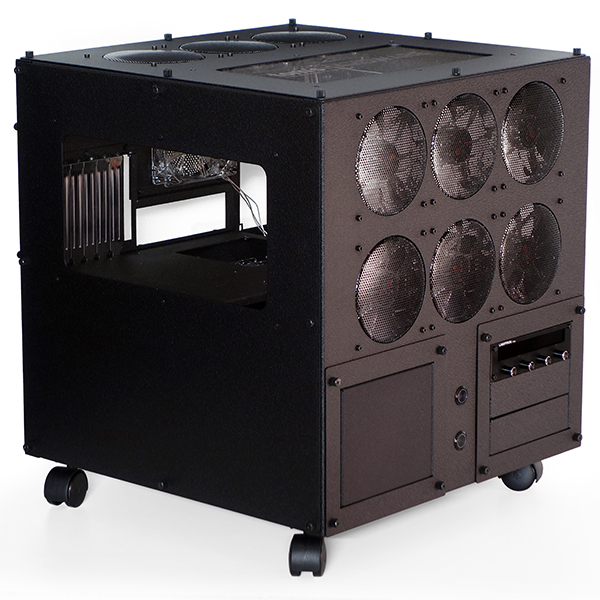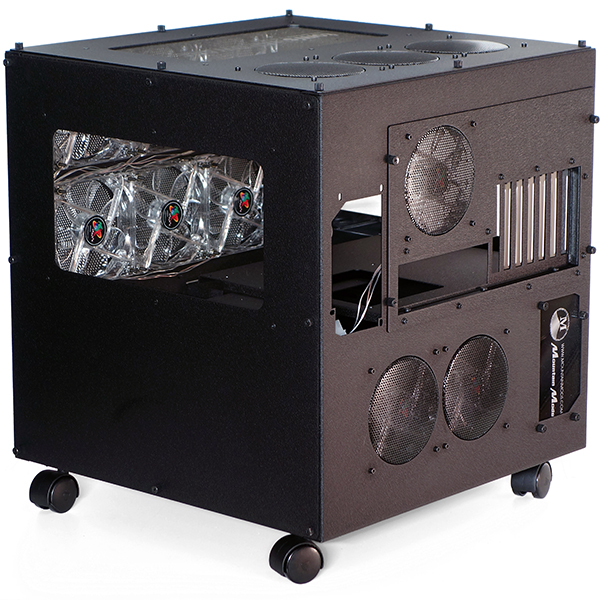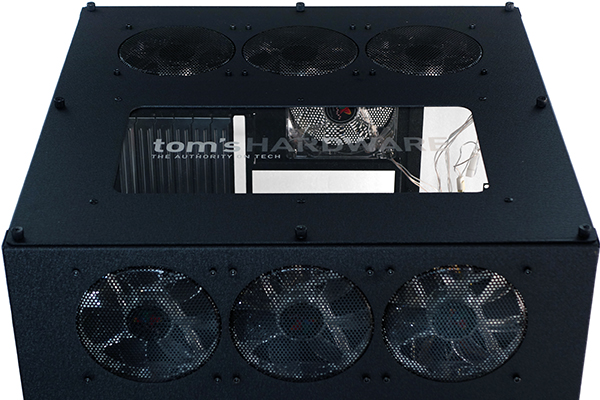Best Of The Best, Part 3: Who Makes The Most Elite PC Case?
We continue our search for the best combination of quality, finish and features with three more cases. Do any meet our Elite criterion?
Mountain Mods U2-UFO (Horizon) CYO
Built in the company's Horizon orientation, the only way to get this version of the U2-UFO is by using Mountain Mods' “CYO Flash Picker”. Starting with a $280 shell, the firm added its “Duality” front panel (a $25 upgrade), left and right half-windows ($10 each, x2), Triple Top panel (a $10 upgrade), and Horizon motherboard brace for horizontal mounting ($25). It's then topped with Black Wrinkle powder coat ($50) and a $20 window etching.
Getting us up to a $666 pre-assembly price are twelve 120 mm Logysis fans ($78 combined), twelve 12MGAK-NM mesh fan covers ($36 combined), Lamptron’s FC-6 fan controller ($45), wrinkle-finished triple-HDD cages ($36 each x2), single-bay covers ($13 each x2), and a triple-bay cover ($15.50).
The standard 18” chassis only has the ATX-standard seven slots, making it difficult or impossible to mount a thick graphics card in a motherboard’s bottom slot. Stranger, the flash picker did not have a rear-panel option for the larger 10-slot motherboard tray, though we were able to select both the XL-ATX tray and 10-slot back panel by selecting our configuration from the shopping cart and bringing up the configuration options.
Our U2-UFO includes power and reset buttons, but no front-panel USB or audio ports. We didn’t even find a USB/audio front bay adapter on Mountain Mods' website, so if you prefer plugging devices in to the front of your case without reaching around back, you’ll probably need to find those parts at a case modding specialty store.
Mountain Mods can etch just about any logo you’d like in onto a window, and speaks to our vanity with this example. The workmanship is impressive, and you can bet we'll be on the lookout for an enthusiast-oriented project able to utilize the chassis' copious radiator mounting space.
Get Tom's Hardware's best news and in-depth reviews, straight to your inbox.
Current page: Mountain Mods U2-UFO (Horizon) CYO
Prev Page Three More High-End Cases Compete For Enthusiast Attention Next Page Inside The U2-UFO (Horizon) CYO



